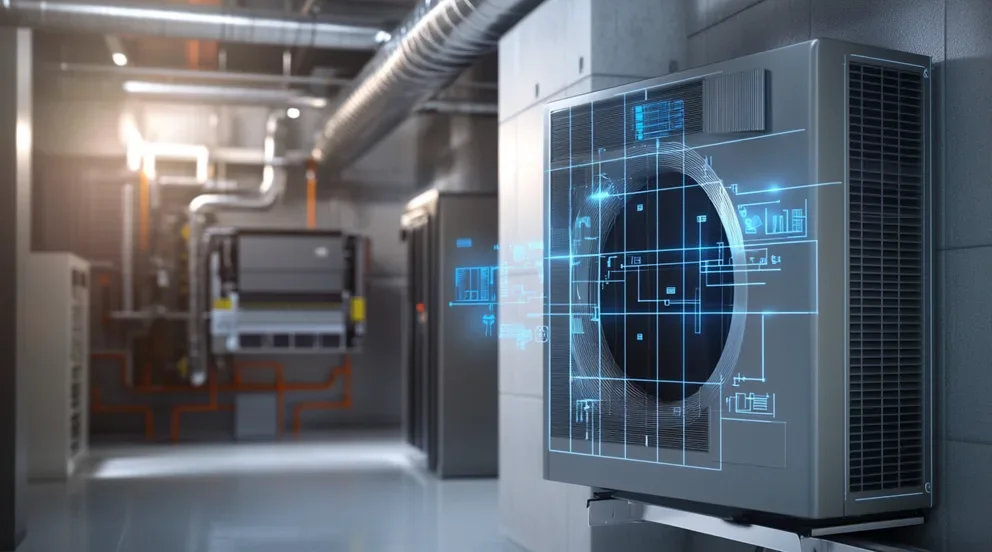Air Balancing Software is a specialized application utilized in the heating, ventilation, and air conditioning (HVAC) industry. This digital tool helps technicians and engineers to analyze, adjust, and optimize the performance of air distribution systems. It aims to ensure that the controlled climate within buildings is evenly distributed, maintaining consistent temperatures throughout different areas.
Utilizing advanced algorithms and data analytics, Air Balancing Software can detect imbalances within the HVAC system. It advises on necessary adjustments to airflows, such as fan speeds and damper positions. This contributes to improved energy efficiency, reduces HVAC operational costs, and promotes a comfortable environment for occupants in residential, commercial, or industrial buildings.
Moreover, the software often incorporates reporting features that document the balancing process and outcomes. This record is critical for maintenance, future auditing, and compliance with industry standards. As buildings and systems become more complex, the need for accurate air balancing is imperative, making this software an essential tool for modern HVAC professionals.
Content:
- Floating to Efficiency: How Air Balancing Software Revolutionizes HVAC Management
- The Silent Revolution in the Sky: Cutting-Edge Business Air Balancing Tools
- Optimizing Skies: The Role of Software in Harmonizing Commercial HVAC Systems
- Streamlining Climate Control: Innovations in Air Balancing Software for Businesses
- Breathing Easy with Technology: The Future of Business Air Balancing Software
In the realm of building management and environmental control, Air Balancing Software is emerging as a powerful ally for HVAC professionals. Its ability to meticulously calibrate the intricacies of air distribution is revolutionizing how we approach indoor climate management. In this article, we’ll delve into the transformative impact that this software has on the industry.
As buildings become increasingly sophisticated, the demands placed on their climate control systems grow exponentially. Traditional methods of air balancing are giving way to digital solutions, which offer precision and convenience unparalleled by manual techniques. Here, we explore how Air Balancing Software has become indispensable for modern HVAC systems.
We will examine the multi-faceted benefits of Air Balancing Software, from energy savings to enhanced occupant comfort. Each section of the article will dissect how the software’s features align with evolving industry requirements, and what this means for future trends in HVAC system design and maintenance. Join us in uncovering the compelling advantages of implementing Air Balancing Software.
Floating to Efficiency: How Air Balancing Software Revolutionizes HVAC Management
Air balancing plays a pivotal role in ensuring HVAC systems operate efficiently. Recent developments in air balancing software are transforming how technicians manage climate control in buildings. This sophisticated technology not only streamlines the work process but also enhances energy savings. By precisely measuring airflow, the software aids in identifying discrepancies in the system. As a result, these tools facilitate the quick adjustment of dampers and fans, leading to an optimized environment.
Technological advancements have allowed these programs to provide real-time analytics. Data-driven insights empower managers to make informed decisions that enhance system performance. With the ever-growing importance of sustainability, air balancing software is becoming essential for businesses. Additionally, this innovation contributes to a marked reduction in a building’s carbon footprint. Furthermore, by maintaining uniform air distribution, occupants benefit from improved air quality and comfort.
Implementing air balancing software into HVAC management requires minimal training. Its intuitive design means that even those with little technical background can navigate the system effectively. Customizable interfaces allow technicians to view and interpret data easily. Subsequently, this accelerates the process of troubleshooting and resolving issues that could compromise the HVAC system’s efficiency.
Cost reduction is another significant advantage of air balancing software. By optimizing the performance of HVAC systems, it drastically lowers energy expenses. This proves crucial, especially for businesses where climate control is a major operational cost. Moreover, the software’s predictive maintenance capabilities prevent costly breakdowns and extend the lifespan of the equipment.
In future developments, integration with other smart building systems is anticipated. This synergy will offer an unprecedented level of control over the internal climate of commercial spaces. Air balancing software is not just an innovation; it represents a giant leap towards the ideal of automated building management. The long-term impacts on efficiency, sustainability, and occupant well-being make it a compelling choice for modern businesses.
The Silent Revolution in the Sky: Cutting-Edge Business Air Balancing Tools
The HVAC industry is undergoing a silent revolution, thanks in part to cutting-edge business air balancing tools. These innovative software solutions promise to streamline the intricate process of maintaining comfortable indoor climates. By adopting these tools, businesses are setting new standards in air distribution. This new technology allows for efficient and precise air balancing, leading to better energy management and healthier indoor environments.
The essence of air balancing involves the adjustment of air distribution to meet the desired thermal comfort. With the introduction of these tools, the precision of air balancing is greatly improved. For businesses, this means achieving optimal temperatures without the guesswork. The meticulous calibration of airflow reduces hot and cold spots, ensuring uniform comfort across different areas of a building.
Business air balancing tools provide a wealth of actionable data. They enable facility managers to analyze and fine-tune their HVAC systems continuously. This manifests not only in energy conservation but also in maintaining the integrity of the system. Moreover, these tools can highlight inefficiencies, prompting preventative maintenance rather than reactive repairs, which can be more costly and disruptive.
By implementing these air balancing tools, companies send a clear message about their commitment to sustainability. Reduced energy consumption is a direct result of more balanced HVAC systems. Hence, businesses contribute to wider environmental efforts while also reaping the financial rewards of a lower carbon footprint. Additionally, the increased level of control over air quality positively affects employee productivity and health.
Looking ahead, the integration of these tools with IoT devices promises even more dynamic and responsive solutions. Smart sensors and learning algorithms could lead to HVAC systems that adapt in real time to changing conditions and occupant needs. As businesses continue to embrace these air balancing innovations, we can expect the silent revolution to make some substantial noise about the future of workspace comfort and efficiency.
Optimizing Skies: The Role of Software in Harmonizing Commercial HVAC Systems
Software is increasingly becoming the unsung hero in harmonizing commercial HVAC systems. This technology stands at the forefront, optimizing air distribution for hundreds of businesses. Its role cannot be overstated, as it provides the essential balancing that ensures energy is used where it’s needed most. By optimizing airflow, software saves resources while maintaining an ideal environment for building occupants.
As businesses grow, their HVAC needs become more complex and demanding. It’s here that air balancing software shows its true worth. Whether it’s a large shopping mall or an office complex, today’s software can handle the intricate details required for an effective balance. With features like analysis tools and trend tracking, these programs are more than a helping hand; they are an essential partner in energy management.
Central to the software’s prowess is the facilitation of proactive maintenance. Scheduling regular checks and balances becomes a breeze with smart reminders and checklists. This prevents the decay of system efficiency over time, ultimately saving businesses from unexpected downtime. In addition, these programs can interface with other monitoring tools, bringing together a holistic view of a facility’s climate control.
Maintaining an optimal climate is about more than just technical performance; it’s also about user experience. With air balancing software, occupants enjoy an environment tailored to their comfort. This human-centric approach to climate control is reshaping the relationship between workspace and worker. The software holds the key to a subtle balance that often goes unnoticed but is always appreciated.
In the coming years, integration with artificial intelligence is expected to take software capabilities to even greater heights. Imagine HVAC systems that learn from patterns of usage and predict the needs of a building before they arise. The potential for such intuitive system management could change the way businesses think about air balancing altogether. As more developments come to light, software continues to carve out its pivotal role in optimizing commercial HVAC systems.
Streamlining Climate Control: Innovations in Air Balancing Software for Businesses
Businesses strive for efficiency in every aspect, including their climate control systems. Streamlined management of heating, ventilation, and air conditioning is now possible thanks to the innovations in air balancing software. This advancement brings with it a suite of features that facilitate precise control over indoor climate. Sophisticated algorithms are designed to keep airflow at optimum levels, promoting an environment conducive to productivity.
Air balancing software offers detailed insights into HVAC system performance. These insights are crucial for businesses that look to conserve energy and manage costs effectively. Through its analysis, the software can identify areas where air distribution is not optimized, causing unnecessary energy waste. Armed with this information, building managers can implement changes to improve efficiency drastically.
Automation is a key feature of the latest air balancing software. Routine tasks that were once labor-intensive can now be managed with little to no human intervention. This shift to automation not only saves time but also enhances the accuracy of air balance adjustments. Additionally, the ability to remotely control HVAC systems is a significant boon, particularly for businesses with multiple locations.
User-friendliness is at the heart of the software’s design. A more intuitive user interface ensures that even users with limited technical expertise can navigate the system effectively. This accessibility means more members of the organization can take part in managing the climate control systems. As such, businesses find it easier to implement best practices in HVAC management across their teams.
Looking towards the horizon, the next wave of innovations in air balancing may well be centered around predictive analysis. This future upgrade could revolutionize how businesses anticipate climate control needs. By understanding and reacting to trends beforehand, HVAC systems will operate with even greater precision. The continual evolution of this technology signifies a clear path towards more streamlined, effective climate control for businesses worldwide.
Breathing Easy with Technology: The Future of Business Air Balancing Software
In the pursuit of enhanced air quality and energy efficiency, businesses are turning to technology. Air balancing software is at the forefront of this drive, offering dynamic solutions to age-old problems. It presents a symbiosis of advanced engineering and ecological stewardship, paving the way for healthier workplaces. By regulating airflow with precision, we not only breathe easier but also leave a smaller environmental footprint.
The capabilities of air balancing software are wide-ranging. It stretches from real-time monitoring to long-term trend analysis. This multifaceted approach gives businesses an edge in maintaining climate control systems that are both resilient and sustainable. Through meticulous adjustments, the software ensures that every corner of a facility receives adequate airflow, contributing to uniform comfort levels.
This technology also heralds a new era of cost-effectiveness. Since electricity forms a major chunk of operational expenses, businesses benefit enormously from optimized HVAC systems. Advanced software facilitates significant energy savings, and as utility costs rise globally, these software solutions are becoming indispensable. The economic advantage, coupled with environmental conservation, is shaping the decision-making around HVAC investments.
Customer service and support systems for air balancing software are evolving rapidly. Developers are building more responsive and knowledgeable support teams to assist with deployments and troubleshoot issues. This focus on customer service enhances the user experience and ensures that businesses can maximize the potential of their air balancing software.
Emerging trends suggest that future iterations of air balancing software will include augmented reality and machine learning. Technicians might soon walk through buildings with augmented reality interfaces, spotting imbalances and rectifying them in real-time. The convergence of technology and HVAC management suggests a future where breathing easy is not just a metaphor but a tangible reality in our workspaces.



